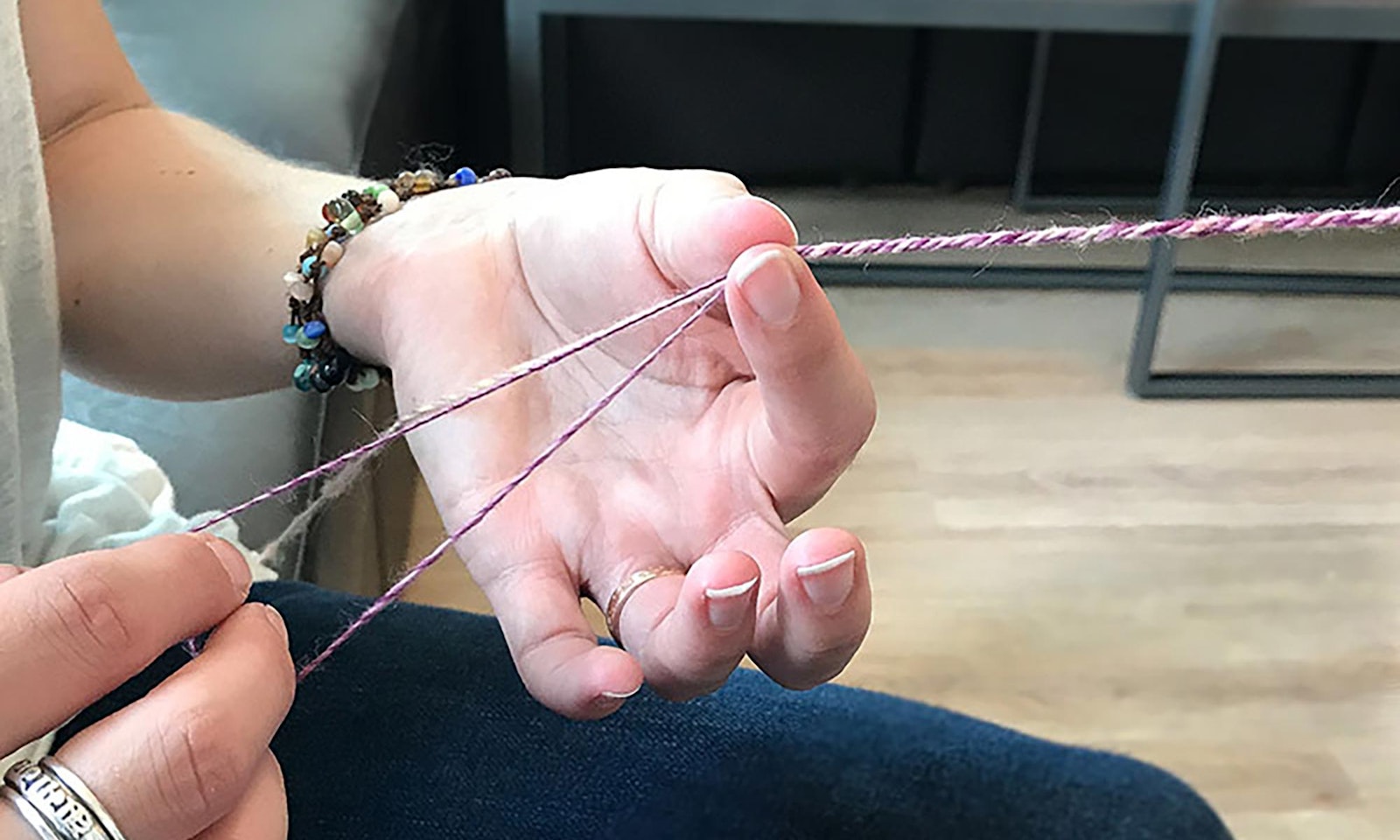Chain-plying is a quick way to create a three-ply yarn from one bobbin or spindle of singles yarn. To create a chain-ply, you’ll fold one singles over itself in a giant crochet chain as you add twist. It takes a little bit of practice to get the rhythm just right, but this guide has everything you need to get started with chain-plying: frequently asked questions, tutorials, and several projects! Of note, chain-plying is sometimes also known as Navajo-plying or N-plying.
Why Should I Chain-Ply?
With traditional plied yarn, you need to spin several bobbins’ worth of singles. If you’re like me, no matter how carefully you weigh out your fiber and no matter how consistently you spin, there’s always a little bit of wasted yarn on one or two of your bobbins. Because you only need one bobbin’s worth of singles for chain-plying, you can use up every inch of precious and expensive fibers.
In addition to getting the most out of my special fibers, I like to use chain-plying when I’m working with small samples. It lets me get a “quick and dirty” idea of what a three-ply yarn will look like without the effort of transferring singles to multiple bobbins.
One of the biggest benefits of chain-plying is color management. Chain-plying is a great option if you want to preserve the beautiful colors in a variegated braid but want something thicker or stronger than your default singles. As you ply, you can even control the length of the loops in your chain to control the amount of marling between color transitions.
 The combination of stitches and chain-plied yarn creates a complex fabric in this crocheted cowl by Connie Lee Lynch. Find the project in Spin Off Winter 2023; photo by Matt Graves
The combination of stitches and chain-plied yarn creates a complex fabric in this crocheted cowl by Connie Lee Lynch. Find the project in Spin Off Winter 2023; photo by Matt Graves
Is Chain-Plying the Same as Three-Ply?
There are a few key differences between a chain-plied yarn and a traditional three-ply.
If there are any inconsistencies in your spinning, these will be magnified in a chain-plied yarn because each section loops back on itself. Thick and slubby sections become even thicker and slubbier, while thin, overspun sections become even more so. This can create great textural effects for scarves and shawls, but if you want a plied yarn with a consistent thickness, you’ll want to start with a consistent singles yarn.
As you create the loops of yarn for the chain, you create a tiny bump in the final yarn. Many spinners like to roll this bump with their fingers as they add ply twist to help it settle into the structure of the yarn.
The bump locks the parts of the chain together. It’s critical to the structure of chain-plied yarn, but it can prevent the yarn from becoming as stretchy, strong, and as smooth as traditional three-ply made from the exact same singles would be.
In practice, these differences have minimal effects on most knitted garments, especially if you choose soft, pliable fibers for your chain-ply. If you choose to chain-ply less flexible fibers like mohair and certain longwools, you might experience the yarn splitting at the bump, and you’ll certainly experience more texture there.
What Can I Make with Chain-Plied Yarn?
Use a chain-plied yarn anywhere you’d use a traditional three-ply yarn of a similar weight and thickness.
Chain-plied yarn isn’t just limited to knitting. I’ve successfully woven with chain-plied warp on a rigid-heddle loom. The only time I’ve had problems with chain-plied yarn is rug punching—that bump sometimes gets stuck in the tube section of a punch needle.

